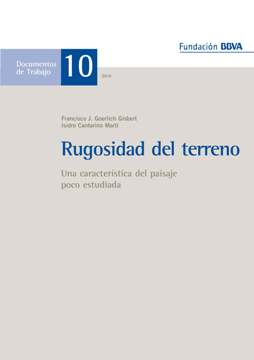
PublicationWorking Papers
Rugosidad del terreno
Una característica del paisaje poco estudiada
This working paper quantifies, at a regional level (NUTS3), terrain ruggedness, and compares it with the average altitude of the region. Altitude is an often-used variable introduced in gravitational models of population or activity location as a measure of physical geography, to pick up a general idea of difficult terrain. Using geographical information systems and the high resolution digital elevation model: Shuttle Radar Topography Mission (SRTM), developed by NASA, we construct a terrain ruggedness index that quantifies topographic heterogeneity, and is based on the slope with respect to neighborhood cells.
From the digital model of ruggedness we build up zonal statistics at a NUTS3 regional scale. We show that ruggedness and altitude are almost completely unrelated at this level of geographical aggregation (NUTS3) and both variables have a very different spatial distribution. Hence, ruggedness has informative content beyond altitude, and our index is a natural variable to be considered as a covariate in location models. The main conclusion is that the ruggedness index provides a summary of a useful geographical feature of the landscape, in the same way as altitude or proximity to the coast.
